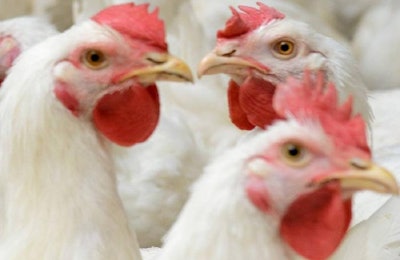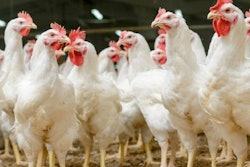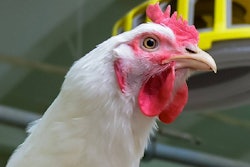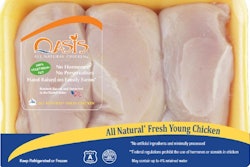Sanderson Farms reported a substantial drop in net income for the third quarter of fiscal year 2018.
Reporting the financial results of the quarter on August 23, Sanderson Farms revealed that it attained a net income of $11.5 million, or $0.50 per share, compared with net income of $115.8 million, or $5.09 per share, for the third quarter of fiscal 2017.
Net income for the first nine months of fiscal 2018 totaled $104.6 million, or $4.58 per share, compared with net income of $206.9 million, or $9.10 per share, for the first nine months of last year.
Net income for the third fiscal quarter reflects an accrual for probable liability for a contribution to the Company’s Employee Stock Ownership Plan of $2.4 million before income tax, or $0.08 per share net of income tax, compared to $12.5 million before income tax, or $0.36 per share net of income tax, for the same period a year ago.
Net sales down for quarter
Net sales for the third quarter of fiscal 2018 were $852.4 million compared with $931.9 million for the same period a year ago. For the quarter, the Company reported net income of $11.5 million, or $0.50 per share, compared with net income of $115.8 million, or $5.09 per share, for the third quarter of fiscal 2017.
Net sales for the first nine months of fiscal 2018 were $2.44 billion compared with $2.42 billion for the first nine months of fiscal 2017.
Executive commentary
“Sanderson Farms’ financial results for the third quarter of fiscal 2018 reflect significant counter-seasonal weakness in market prices for boneless breast meat produced for food service customers,” said Joe F. Sanderson, Jr., chairman and chief executive officer of Sanderson Farms. “In fact, market prices for boneless breast meat, chicken breast tenders, boneless thigh meat, bulk leg quarters and jumbo wings produced at our plants that process a larger bird were all significantly lower this year when compared to last year’s third fiscal quarter. We believe the counter-seasonal softness is due, at least in part, to a lack of chicken promotions at both food service and retail grocery stores and an ample supply of competing proteins. Market prices for poultry produced for retail grocery stores continue to reflect a more balanced supply and demand environment. Feed costs per pound of chicken processed during the third fiscal quarter were up 5.8 percent compared to last year’s third quarter and were higher by 7.7 percent sequentially.”
According to Sanderson, compared with the third fiscal quarter of 2017, market prices for chickens sold to retail grocery store customers remained relatively flat at levels reflecting a good supply and demand balance. Compared with the third fiscal quarter of 2017, jumbo boneless breast meat prices were lower by approximately 26.6 percent, the average market price for bulk leg quarters decreased approximately 12.0 percent, and jumbo wing prices were lower by 35.4 percent. The company’s average feed cost per pound of poultry products processed increased 1.5 cents per pound, or 5.8 percent, compared with the third quarter of fiscal 2017.
Prices paid for corn and soybean meal, the Company’s primary feed ingredients, increased 4.3 percent and 15.5 percent, respectively, compared with the third quarter of fiscal 2017. In its report published August 10, 2018, the USDA’s supply estimates for both corn and soybeans were higher than analysts’ expectations. If achieved, the USDA’s current yield and harvest estimates for the United States’ 2018 corn and soybean crops would leave both grains well supplied going into fiscal 2019. Had the company priced all of its feed grain needs for fiscal 2019 at yesterday’s closing Chicago Board of Trade prices, cash costs for grain would be $15.2 million higher during fiscal 2019 compared to this fiscal year.
Sanderson added, “The USDA expects chicken production growth of 2.3 percent during calendar 2018, which alone shouldn’t be a burdensome supply number. However, chicken will continue to compete against an abundant domestic supply of protein, which may continue to pressure market prices. As always, we will manage our business consistently regardless of market cycles.
“We continue to make progress at our new Tyler, Texas, facilities. Construction is expected to be complete during the first quarter of calendar 2019, and we look forward to the opportunities the new facilities will provide to our shareholders, our customers and our employees,” said Sanderson.


















